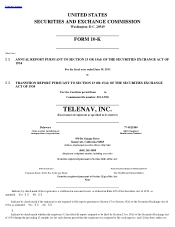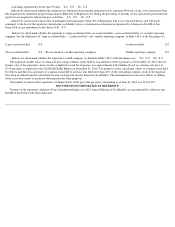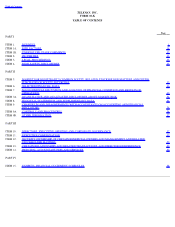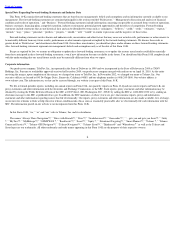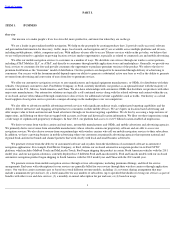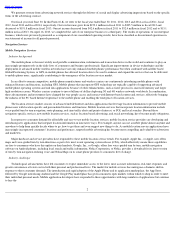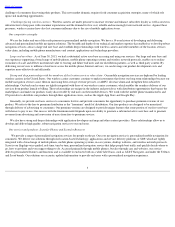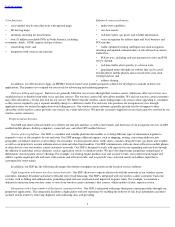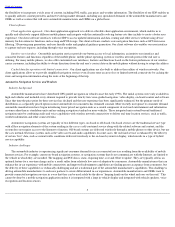TeleNav 2013 Annual Report Download - page 12
Download and view the complete annual report
Please find page 12 of the 2013 TeleNav annual report below. You can navigate through the pages in the report by either clicking on the pages listed below, or by using the keyword search tool below to find specific information within the annual report.
Table of Contents
mobile user is the ability to identify the location of the user. Location is a powerful indicator of an individual's likely next action. Therefore,
advertising delivered to mobile devices has the potential to increase the impact and relevance of an ad to the user. With mobile advertising, an ad can
be targeted to a consumer who is in close proximity to a specific location, such as a retail store, or to a consumer who recently visited that store. The
ad also has the potential to influence the user to walk into a nearby store. Given the benefits of mobile advertising as compared to traditional offline
advertising and PC-based online advertising, we expect that marketers will continue to shift their advertising budgets to mobile.
Industry challenges
The mobile advertising marketplace is a dynamic, fast growing industry with many new participants both in terms of providing services as well
as consumers of those services in the form of advertisers. Advertisers are transitioning portions of their marketing budgets to the mobile marketplace.
These advertisers need to be able to conduct ad campaigns that achieve favorable return on investment, or ROI. Such ROI requires scale, reach,
audience targeting capabilities and campaign effectiveness measurements. The mobile advertising provider marketplace is comprised of application
developers, advertising networks, mobile agencies, advertising exchanges and demand-side platforms. Different market participants have focused on
different potential means to increase the effectiveness of mobile advertising solutions. Certain participants focus on specific application users, others
focus on location components, and still others focus on scale and effectiveness of delivery. Tracking the performance of ads in applications and user
interactions with those ads is difficult and requires significant technological capabilities and know-how.
Our competitive strengths
Our mobile advertising solution combines the large and growing number of impressions marked with location information, a unique ability to
focus on particular audiences, and a dynamic user experience customizable based on location.
Our 14 years of experience in the arena of GPS-powered mobile technology has allowed us to develop a number of techniques that allow us to
differentiate between impressions that are simply claiming to be marked with a location and those that are accurately marked with a dynamically
accurate latitude-longitude. Among other techniques, we apply location scoring, app scoring, publisher audits, and test placements to achieve this
result.
Because of our ability to identify location on a real-time and historical basis, we can combine that data with data on particular places at
particular times in order to identify and focus our ads on specified demographics. For example, an ad delivered in a geographic area where it happens
to be raining can have a rain-related message. An ad for sunblock can be limited to areas with a high level of sunlight and ultraviolet radiation.
Our services and products
Our services are built around the ability to provide sophisticated location-
based advertising in a format particularly easy for an advertiser to use.
For example:
Creatives - We can run a wide range of creatives, including static, dynamic and rich media content. The dynamic banners can not only be
animated, but can also have information automatically populated to the time and place. For example, a consumer viewing an eatery's ad two blocks
away can have the distance to the eatery displayed.
Drive-To - We have the ability to provide spoken and animated driving directions to advertised destinations. We use a proprietary web-based
solution that does not require the installation of a separate application.
Reports & Metrics - We offer clients a broad range of reports that allows them to stay on top of all their advertising campaigns, and lets us
explain clearly what is happening at any particular point in time with respect to any of the campaigns being run. At the end of major advertising
campaigns we produce a report that summarizes and explains each aspect of the campaign's performance.
Platform and architecture
Our platform is hosted in the cloud, primarily by Amazon Web Services, or AWS. We leverage the flexibility and scalability of these cloud service
providers to meet our scale requirements.
Technology
Navigation Services
7


